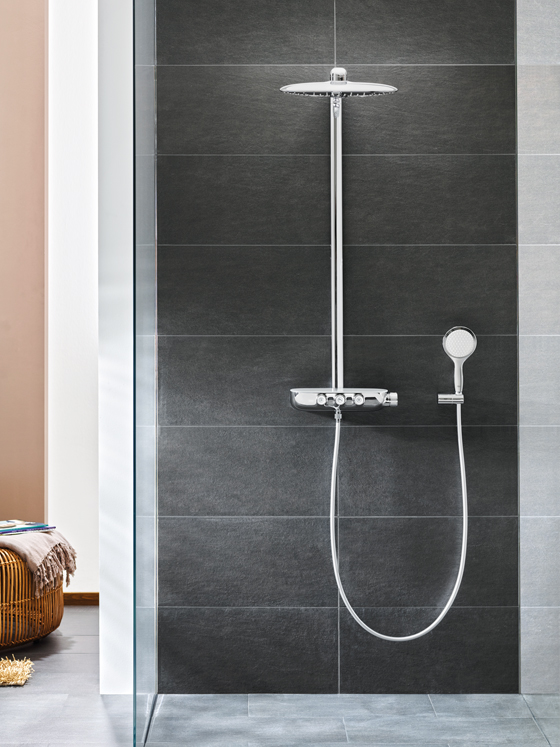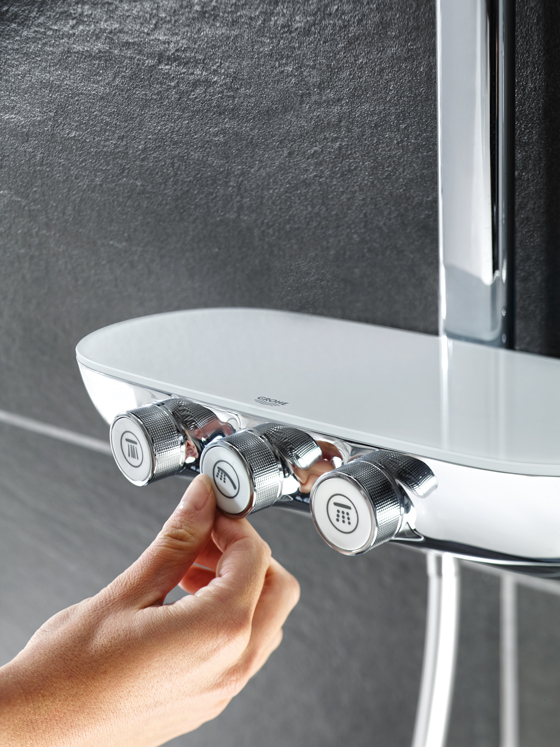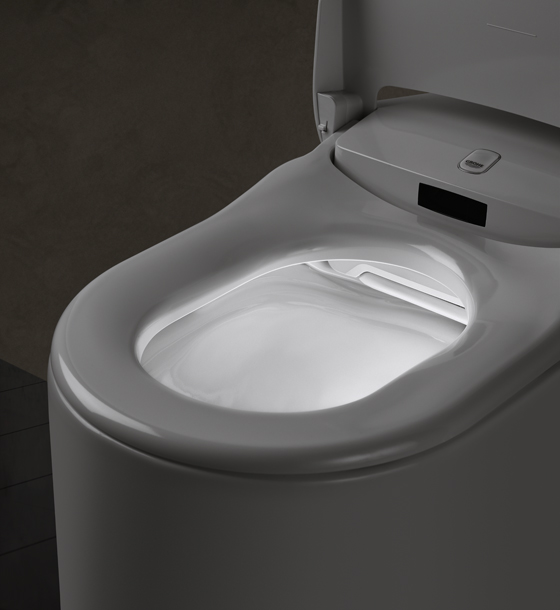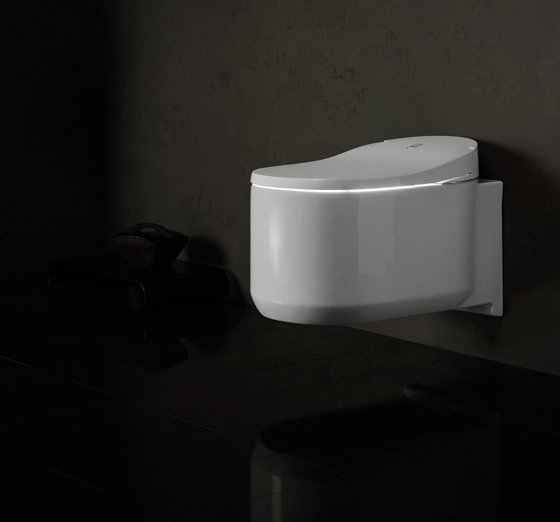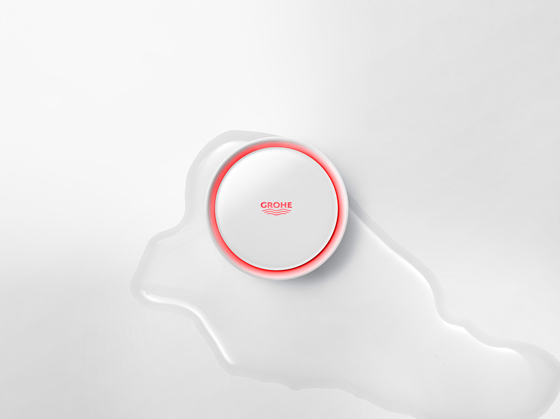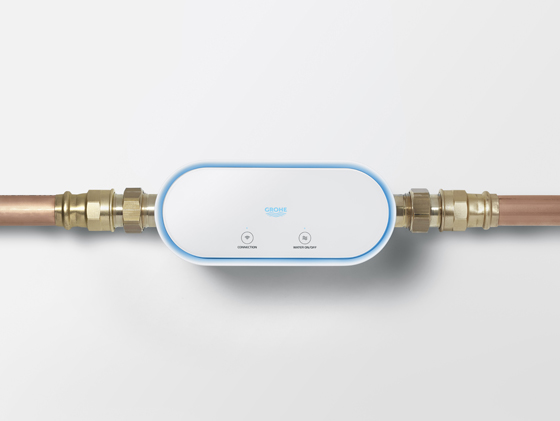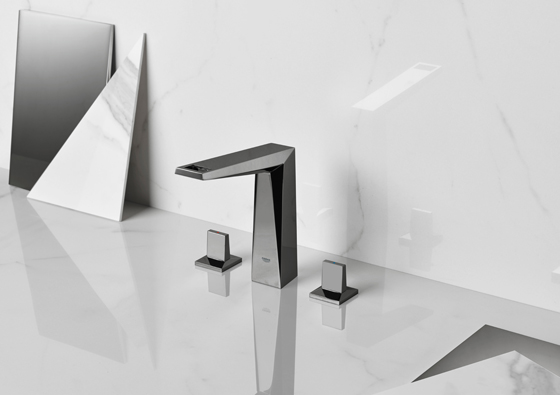Fluid Intelligence: Grohe
Brand story by Simon Keane-Cowell
Düsseldorf, Germany
05.09.17
If anyone knows water, Grohe does. In spite of having clocked up over 100 years in business, the world’s leading provider of premium sanitary fittings is squarely looking to the future, with technology, innovation and sustainability its constant currents.
It’s seven years since the UN formally acknowledged water as a fundamental human right.
Access to clean water and sanitation, it’s fair to say, is something we take for granted in the developed world, however. And yet we know we’re almost certainly facing a future where water, due to such inescapable factors as population growth and shifting weather patterns, moves from natural resource to precious commodity – one that, in the coming decades, some experts predict might even come to be traded on the markets in the way that oil, grain or gold is today.
If good design is as much about how things function – how they effectively address a particular need or solve a particular problem – as it is about how they deliver on an aesthetic level, then Grohe is arguably the design leader when it comes to the sanitary sector. With its technology-first approach, the German-based manufacturer has been innovating products for over a century, where the user experience is as considered as the objects and systems themselves.
Grohe’s award-winning SmartControl system takes a cue from AV consumer products with its intuitive push-button controls and multi-spray functionality, making for a dynamic, customised shower experience for users

Grohe’s award-winning SmartControl system takes a cue from AV consumer products with its intuitive push-button controls and multi-spray functionality, making for a dynamic, customised shower experience for users
×In recent years, the award-winning brand has specifically sought to marry the pleasure that water can produce (it takes as its brand motto ‘The Pure Joy of Water’) with the responsibility that comes with its usage in sustainability terms. “Everything that comes out of the Grohe Design Studio,” explains the company’s design chief Michael Seum, “has to have some element of technology and sustainability embedded in it. As well as being an iconic piece of design that has real permanence.”
Relevance is key for Seum and his team, who constantly monitor both the performance of the Grohe collection in market terms and as well as shifts in design tastes globally and in user behaviour. They are experts, for example, in revisiting older, product configurations and rethinking and adapting them to meet the needs of the current – and future – market. Take their Lineare family of bathroom faucets, which was recently redesigned to offer greater visual levity, in keeping with the trend in interiors over the past few years for a nomadic, lightweight aesthetic.
Japanese technology meets European design DNA in Grohe's Sensia Arena shower toilet, which marries high performance with a pared-down formal expression and light visual aesthetic
“We have to be sure we’re in synch with how people’s bathrooms are evolving in the long-haul,” says Seum. “With, of course, the right amount of technology injected into all of our lines.” An ongoing dialogue with some of the world’s leading architects – who are often working years in advance on their various projects – ensures that Grohe is future-proofing its work as much as they can. “Architects look at spaces and places and we’re part of that experience – whether it’s in a bathroom or a kitchen. Or a water security feature. We engage early with architects to know what their real needs are, long-term, to give them a platform to help manage water more intelligently in their buildings.”
The technology/sustainability/design thread that Grohe has made its own runs right through its diverse portfolio, ranging from innovative products for hygiene and pleasure to health and protection. Rainshowers are, of course, a standard fixture in upper-segment contract and residential settings, but Grohe’s award-winning SmartControl system, with its intuitive push-button control and multi-spray, now offers users a truly personalised experience.
Taking a cue from the way one interacts with AV consumer products, it allows you not only to dial up the volume of water, but also to adjust the various sprays dynamically. This means you use exactly the right amount of water you need.
The Grohe Blue water-filtration system tackles environmentally damaging plastic-bottling head on. Tap water, controlled by an architecturally expressive faucet, passes through a high-performance filter, where it is cooled, and if desired, carbonated
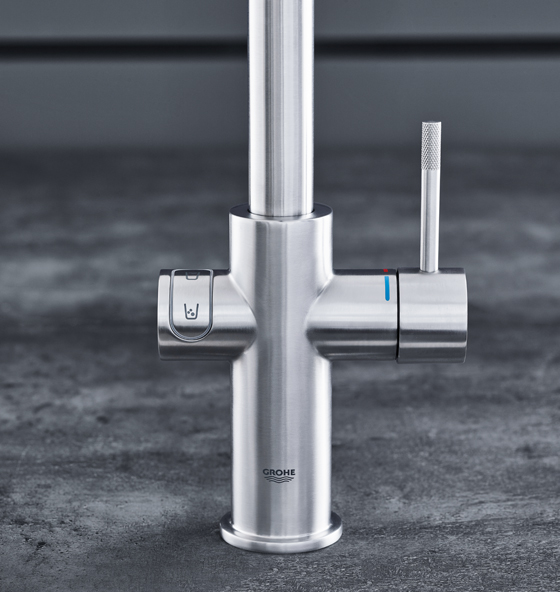
The Grohe Blue water-filtration system tackles environmentally damaging plastic-bottling head on. Tap water, controlled by an architecturally expressive faucet, passes through a high-performance filter, where it is cooled, and if desired, carbonated
×Grohe’s Sensia Arena shower toilet, meanwhile, has met with an equally enthusiastic consumer response. Leveraging the top-level hygiene technologies developed by its parent company Lixil (the leading manufacturer of shower toilets in Japan), it has created a high-performance toilet that, on a optical level, wears its technology lightly. “We’ve humanised the technology, making it look like a regular toilet,” explains Seum, “so that consumers still feel that it looks approachable. In short, we’ve given it European design DNA.”
In addition to Grohe designing the user experience of water on the body, it has also thought about how we literally consume the stuff, disrupting the alarmingly unsustainable way water is packaged for drinking purposes. Against a backdrop of sobering statistics – such as 8 million tonnes of plastic leaking into our oceans each year (which, according to the UN equates to the dumping of garbage truck full of plastic every minute) – the manufacturer’s Grohe Blue advanced water-filtration system takes the fight to environmentally damaging plastic-bottling.
Water security from Grohe: Grohe Sense, a wireless, portable sensor, detects leaks and changes in humidity and temperature within the home, while Grohe Sense Guard, installed onto existing pipe work, identifies and stops burst pipes and leaks
Tap water, controlled by a brushed steel or chrome faucet, strongly architectural in expression, passes through a high-performance filter. In doing so, it undergoes cooling and can also be carbonated if desired. What you see, to coin a phrase, is what you get with Grohe Blue – you draw exactly the amount of water that’s required for drinking. In contrast, bottled-water production requires on average a staggering 7 litres of water to produce 1 litre of the packaged stuff. And then, of course, there are the high levels of CO2 emissions.
Reduction also plays a major role in Grohe’s move into the technology-led field of water security with their recently launched Grohe Sense and Grohe Sense Guard devices, which act as smart early-warning systems in the event of flooding in the home. Significantly reducing the likelihood of expensive water damage, as well as allowing users to track and reduce their domestic water consumption, the two products combined provide an unprecedented level of monitoring and control.
The Grohe Spa Colours range allows architects to realise projects without compromise. Design chief Michael Seum: "Architects look at spaces and places, and we’re part of that experience. We engage early with them to know what their real needs are.”
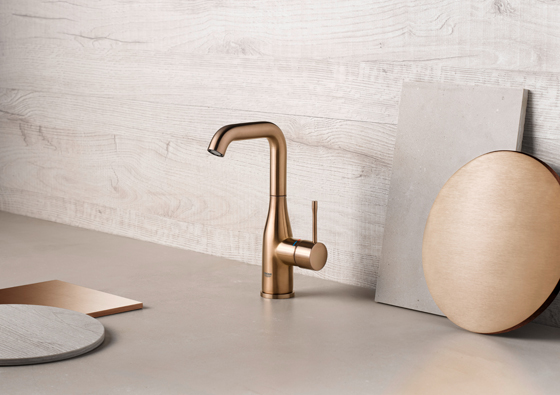
The Grohe Spa Colours range allows architects to realise projects without compromise. Design chief Michael Seum: "Architects look at spaces and places, and we’re part of that experience. We engage early with them to know what their real needs are.”
×Both Grohe Sense – a small, wireless sensor that can be placed anywhere within the property and which detects leaks, changes in humidity and temperature – and Grohe Sense Guard – a unit physically installed onto existing pipe work that identifies burst pipes, stopping the water flow instantly, as well as detecting micro-leaks and frost risk – relay information constantly to the user wherever they happen to be via a Grohe digital app. Conversely, the app allows you to control the devices remotely.
As a new building block in the internet of things, with clear consumer benefits, these two water-security products could be seen as functioning as a metaphor for Grohe as a whole – a diligent, technologically prime vanguard, ensuring that our experience of water is safe, efficient and, above all, pleasurable.
© Architonic


